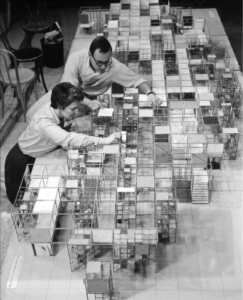
This issue of OASE wants to take a position in relation to the ways in which
authorship in architectural practice is both claimed and addressed.
- It wants to argue for the importance of authorship and explore a wider variety of its conceptions in architectural practice.
- It wants to obtain a more nuanced and varied understanding of the characters and roles that authorship, understood as the ‘owning’ of a particular architectural practice, plays.
- It wants to offer a theoretical and methodological framework to address alternative forms of authorship;
- It wants to investigate alternative, contested and hidden authorships so as to understand the responsibility of the creative act in different ways.
For this issue of OASE editors are seeking contributions that examine aspects of authorship. Editors are interested in focused discussions of relevant contemporary or historical projects or buildings in relation to authorship’s varying definitions and
understandings, focusing on a single case study. Editors specifically welcome proposals that address the field of tension between individual and collective authorship or between cultural claims and social responsibility. Each essay might elaborate on one form of authorship, be it neutralising authorship, deferring authorship, authorship by implication, resistant authorship, activist authorship, reinforced authorship, embedded authorship, fluid authorship and so on. What is being achieved by other, new or reactivated forms of authorship?
Abstracts of maximally 500 words (for texts of ca. 2,000 words) must be submitted in Dutch or English no later than 21 November 2021 (18:00 Central European Time) via info@oasejournal.nl, together with the author’s name(s), e-mail address, professional affiliation and a short bio (150 words maximum).
More information and the full call can be found on the OASE website.
